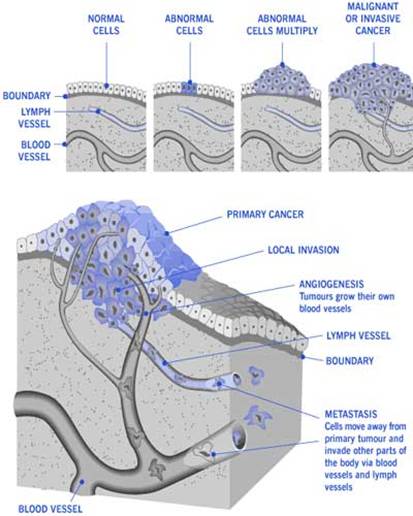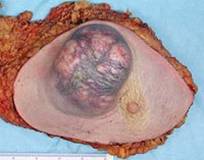A Nobel prize was given to Otto Heinrich Warburg in 1931 for this discovery. Cells become anaerobic (i.e. cancerous) due to lack of oxygen to fuel their mitochondrial aerobic energy production. (Note that not all cells use oxygen to create energy;E.g. Mature RBCs produce energy by anaerobic glycolysis).


Cancer is the leading cause of death worldwide killing nearly 10 million people in 2020 --- nearly 1 out of every 6 deaths
World Health Organization
Benign tumors (benign neoplasm) are not cancerous. They are a proliferation of abnormal cells that stop growing by themselves, and which do not invade adjacent tissue or metastasize.
Pre-cancer. Benign, non-invasive tumors are also called pre-cancerous because they have the potential to progress to cancer (i.e. become invasive) if left untreated.
Cancer begins when:
(1) More cancer cells are being created than . . .
(2) An overworked, depleted immune system can destroy.
Why is our immune system not strong enough to identify and eliminate new cancer cells. The weakening of the immune system is consequential to, for example:
All these subjects and more are addressed at:
What are the more specific causes of a cell becoming cancerous? The burning question of the day, however, you will find likely answers here:
Cancer cells produce and secrete millions of ENZYMES, which can destroy surrounding (extracellular) collagen and tissue. This would otherwise restrict the spread of cancer. The "Rath Cellular Therapy" and sufficient thyroid hormone inhibit the degradation of connective tissue in the extracellular matrix (ECM).
Cancer cells and microbes travel to new areas via the bloodstream. Destructive cancer cell enzymes can eventually "cut" their way through the extracellular tissue to reach blood vessel walls through which the cancer cells may gain entrance to the blood stream.
The lifestyle of solid tumor cells requires variable degrees of adaptation to an hypoxic (low oxygen) environment. In low oxygen conditions, the much more efficient aerobic metabolism does not work well. Cancer cells adapt to their new way of life by a number of mechanisms, from membrane transport differences to variations in regulating the production of cellular ATP energy.
Cancer cells have a competitive advantage over normal cells - the high rate of glucose consumption and concomitant release of acid may give tumor cells a competitive advantage over normal cells in the immediate environment.
Normal cells do not tolerate acid conditions very well. Tumor cells do;
Dividing cells require certain substances. The backbone for these crucial substances is derived from glucose metabolism.
It may not be possible to revert anaerobic cancer cells back to aerobic by simply supplying oxygen. Dr. Otto Warburg reported that even under aerobic conditions, tumor cells consumed glucose and produced lactic acid at exceptionally high rates. Note, however, that cancer cell can be destroyed by sufficient oxygen presence